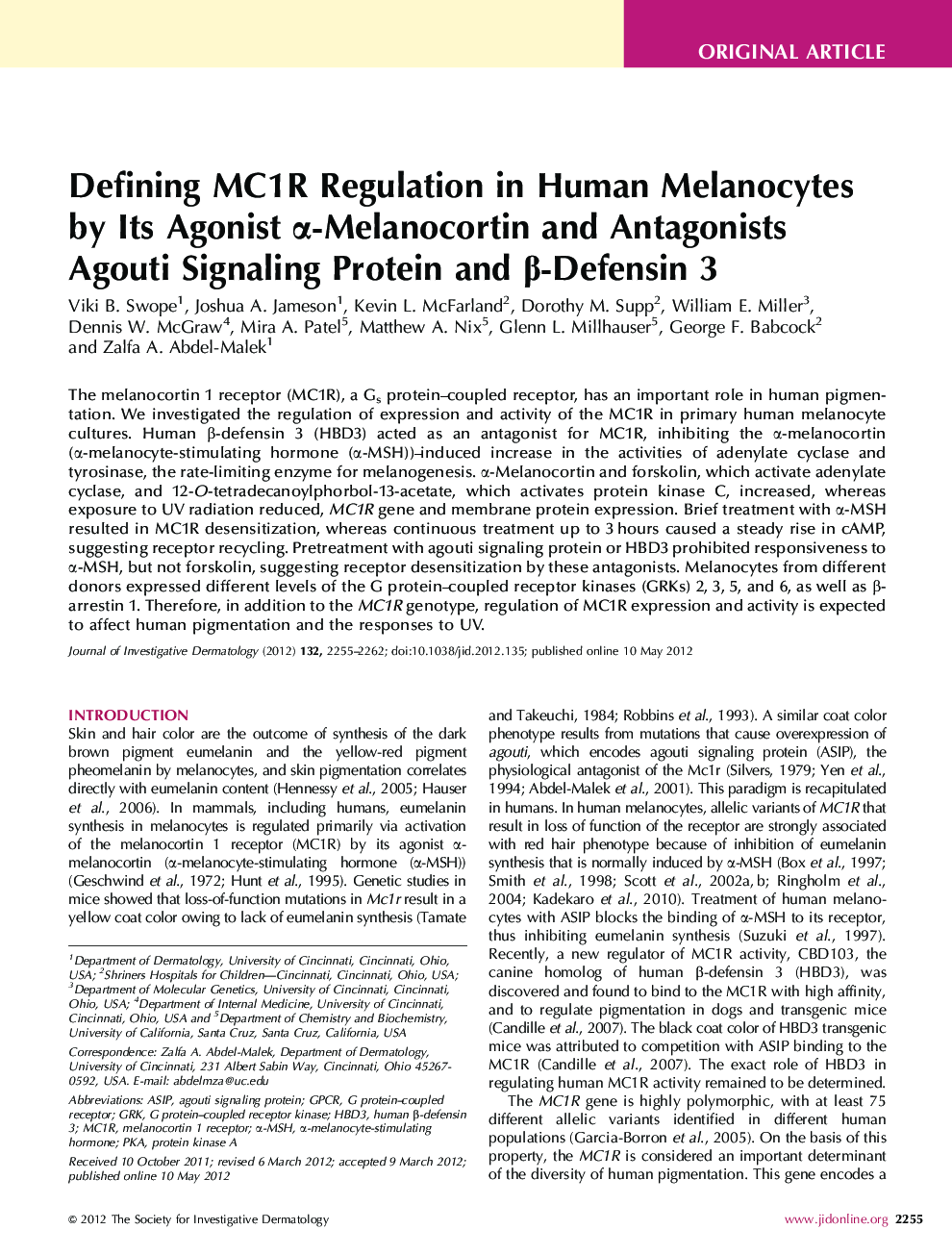| Article ID | Journal | Published Year | Pages | File Type |
|---|---|---|---|---|
| 6077554 | Journal of Investigative Dermatology | 2012 | 9 Pages |
Abstract
The melanocortin 1 receptor (MC1R), a Gs protein-coupled receptor, has an important role in human pigmentation. We investigated the regulation of expression and activity of the MC1R in primary human melanocyte cultures. Human β-defensin 3 (HBD3) acted as an antagonist for MC1R, inhibiting the α-melanocortin (α-melanocyte-stimulating hormone (α-MSH))-induced increase in the activities of adenylate cyclase and tyrosinase, the rate-limiting enzyme for melanogenesis. α-Melanocortin and forskolin, which activate adenylate cyclase, and 12-O-tetradecanoylphorbol-13-acetate, which activates protein kinase C, increased, whereas exposure to UV radiation reduced, MC1R gene and membrane protein expression. Brief treatment with α-MSH resulted in MC1R desensitization, whereas continuous treatment up to 3 hours caused a steady rise in cAMP, suggesting receptor recycling. Pretreatment with agouti signaling protein or HBD3 prohibited responsiveness to α-MSH, but not forskolin, suggesting receptor desensitization by these antagonists. Melanocytes from different donors expressed different levels of the G protein-coupled receptor kinases (GRKs) 2, 3, 5, and 6, as well as β-arrestin 1. Therefore, in addition to the MC1R genotype, regulation of MC1R expression and activity is expected to affect human pigmentation and the responses to UV.
Related Topics
Health Sciences
Medicine and Dentistry
Dermatology
Authors
Viki B. Swope, Joshua A. Jameson, Kevin L. McFarland, Dorothy M. Supp, William E. Miller, Dennis W. McGraw, Mira A. Patel, Matthew A. Nix, Glenn L. Millhauser, George F. Babcock, Zalfa A. Abdel-Malek,
